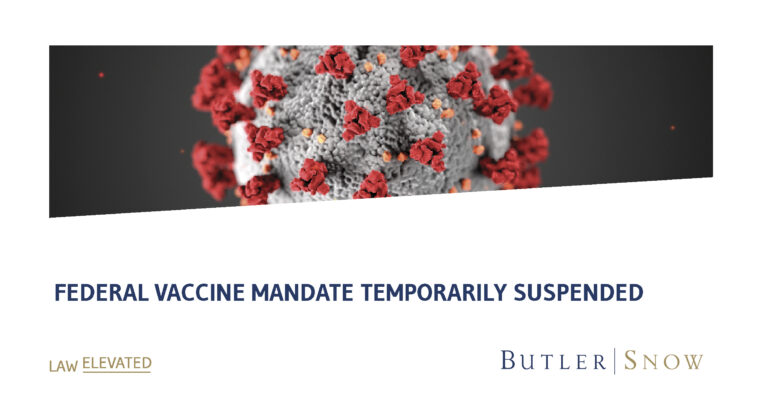November 8, 2021
On Saturday, November 6, 2021, the United States Court of Appeals for the Fifth Circuit temporarily suspended the Biden administration’s emergency temporary standard (“OSHA ETS”) for employers with 100 or more employees. As we reported last week, the OSHA ETS mandates that covered employers implement Covid-19 vaccination or regular testing requirements for employees. Citing “grave and constitutional issues,” the three-judge Fifth Circuit panel put the newly issued rule on hold pending further litigation. The stay order has nationwide effect.
While lawsuits challenging the brand new OSHA ETS were filed by 27 states and private businesses in multiple circuits (including the Sixth Circuit), the conservative Fifth Circuit was the first court to rule on the issue. Challengers argue that the OSHA ETS is illegal, in that it exceeds the authority of, and is not proper subject matter for, the issuing agency (OSHA), and would be counterproductive by further straining an already tight labor market. The Biden administration contends that the OSHA ETS is lawful and necessary to help end the Covid-19 pandemic, and stated it will vigorously defend the ETS in forthcoming court proceedings.
BOTTOM LINE.
The stay order from the Fifth Circuit means that, for the moment, employers are not obligated to abide by the requirements of the OSHA ETS. However, the stay order does not represent a final ruling on the substantive merits or enforceability of the OSHA ETS. The ultimate fate of the OSHA ETS is not known at this time, so covered employers should continue to watch the situation closely. Events should unfold quickly. The Fifth Circuit required the United States Government to respond to the petitioner’s motion for permanent injunction by 5:00 p.m. on Monday, November 8, 2021 and ordered the petitioners to file any reply by 5:00 on Tuesday, November 9, 2021.
Butler Snow will continue to monitor and provide status updates on these developments. Employers should contact experienced employment law counsel with any specific questions they may have about the impact of these developments on their operations.
